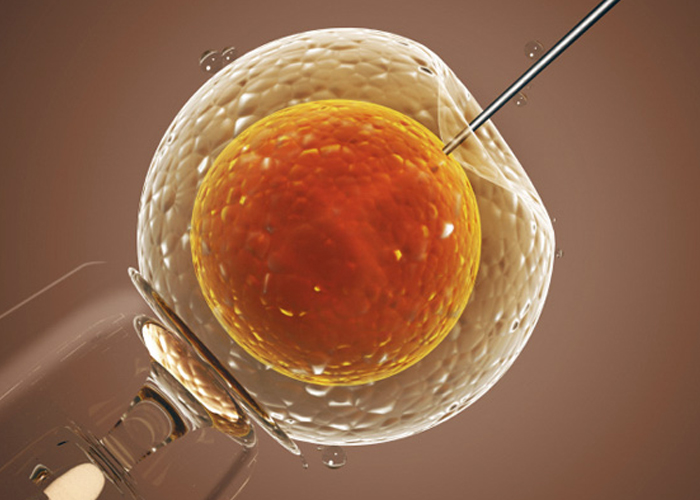By: IVF Chandigarh On: August 31, 2016 8:56 AM

Male factors constitute an important cause of infertility. An assessment of male factors and a good semen testing are crucial while investigating an infertile or a sub fertile couple. Traditionally, semen examination is undertaken with microscopy to count the number and examine the mobility of sperms. It is now clear that a routine examination is not enough. Advanced investigations into sperm quality are essential to know the cause of failure, select the appropriate sperms for fertilization and improve upon the chances of success of treatment. Advanced semen testing provides a clear understanding of the functional capability of sperms. A comprehensive semen testing requires much more than a mere microscopic examination.
Semen Profile: Following tests are required for a good semen profile:
Manual semen analysis: Semen volume, pH, colour, viscosity, sperm concentration, total sperm count and percent mobility.
Computer assisted semen analysis (CASA): It enhances the analytic characteristics by measuring parameters which are not detected by the human eye. These measurements include –velocity, linearity, progressive motility and amplitude of lateral sperm head movement, flagellar beat frequency and hyperactivation. The pregnancy rates are shown to relate to the percent progressive motility.
The results of both manual and computer assisted semen analysis guide the doctor to create an individual treatment plan for the couple. Some of the motion parameters help to grade the sperm motility while others help to assess the functional quality of the sperm for its fertilization potential. One can therefore select the best quality sperm for fertilization.
Leukocytospermia Quantification: It is used to differentiate white blood cells (WBCs) from other immature germ cells in the semen. WBCs in high numbers are present in the semen in the presence of infection. WBCs produce reactive oxygen species (ROS) thus impairing the quality of semen. Such a patient may require treatment to improve the sperm motility and chances of conception.
Special staining for Azoospermic patients: Azoospermia implies the absence of sperms in the semen. This is routinely reported after microscopic examination. Sometimes, there may be a rare spermatozoa in the semen which may perhaps be useful for fertilization with special techniques. Presence of nil or rare sperms can be decided with the help of special stain i.e. nuclear fast red picroinidigocarmine (NFPIC). The clinician can decide about testicular biopsy or microscopic testicular sperm extraction (Micro TESE) for treatment of infertility due to ‘azoospermia’ with the help of NFPIC staining.
Sperm Antibody Test: Sometimes, there is presence of antibodies on sperms responsible for ‘immunological’ infertility. This can be suspected in the presence of the following:
- Sperm agglutination
- Poor sperm motility
- Unexplained infertility
- Failed In vitro Fertilization (IVF)
Semen sample can be tested for the presence of anti-sperm antibodies (IgG and IgA) by using a special mixed anti-globin reaction (MAR) test.
Semen Biochemistry: Semen Function Tests e.g. Hypo-Osmotic Swelling Test (HOS)
Semen Oxidative Stress Profile
Reactive Oxygen Species (ROS): ROS are free radicles which are toxic to various tissues. Presence of ROS in the semen adversely affects the quality and function of sperms. Increased oxidative stress is an important cause of infertility in men. ROS levels can be measured with the help of luminescence method. ROS assessment is done in the following conditions:
- Presence of white blood cells in semen
- Infertility with normo-zoospermia
- Presence of clinical varicocele
- Advanced age (paternal)
- High ROS may also be present in the presence of genital tract infections, prostatitis and some other conditions.
In addition, measurement of total antioxidant capacity may also be required since it is the balance between ROS and antioxidant level which is most important. If an imbalance is detected, treatment may be directed to correct the imbalance.
Sperm DNA Damage Test (DNA fragmentation analysis and Acrosome reaction test): DNA damage tests are required in following conditions:
- Presence of clinical varicocele
- Idiopathic infertility
- Fertilization failure
- High percentage of abnormalities in the morphology of sperms
- Repeated miscarriage and abortion
Presence of high DNA damage is responsible for poorer results of ART. The test helps the doctor to decide the type of ART required to be performed in a case depending upon the extent of DNA damage. Every test may not be required for each patient. The clinical decision is required to be made by the doctor in charge. It is however important to remember that semen testing, especially in the presence of an intractable male factor, should include advanced investigations before considering other options of treatment. It may also be added that the sperm selection based on its quality, sperm processing, sperm banking and insemination for fertilization also require advanced and sophisticated methodology with an excellent quality-control to achieve the best results.”



